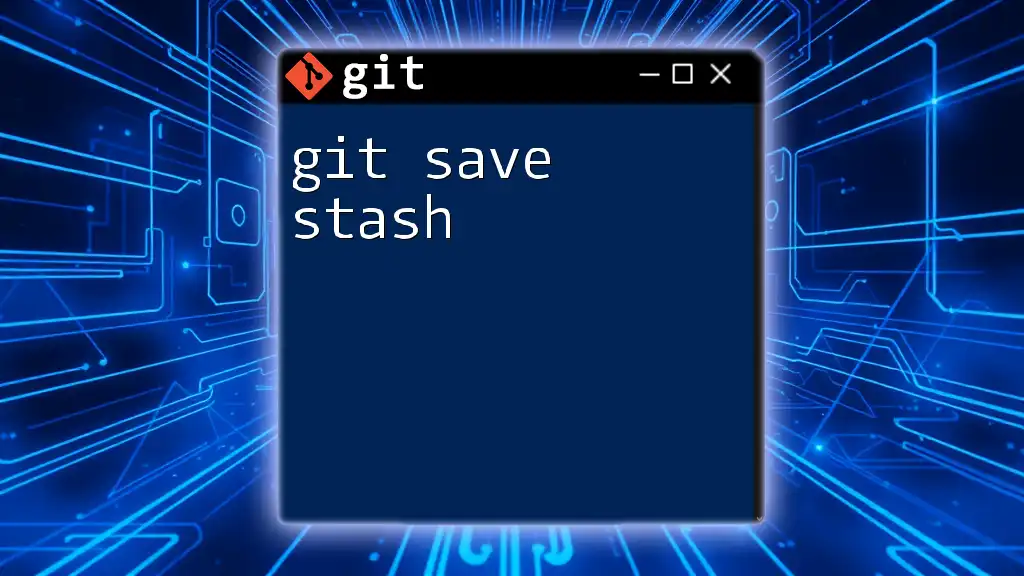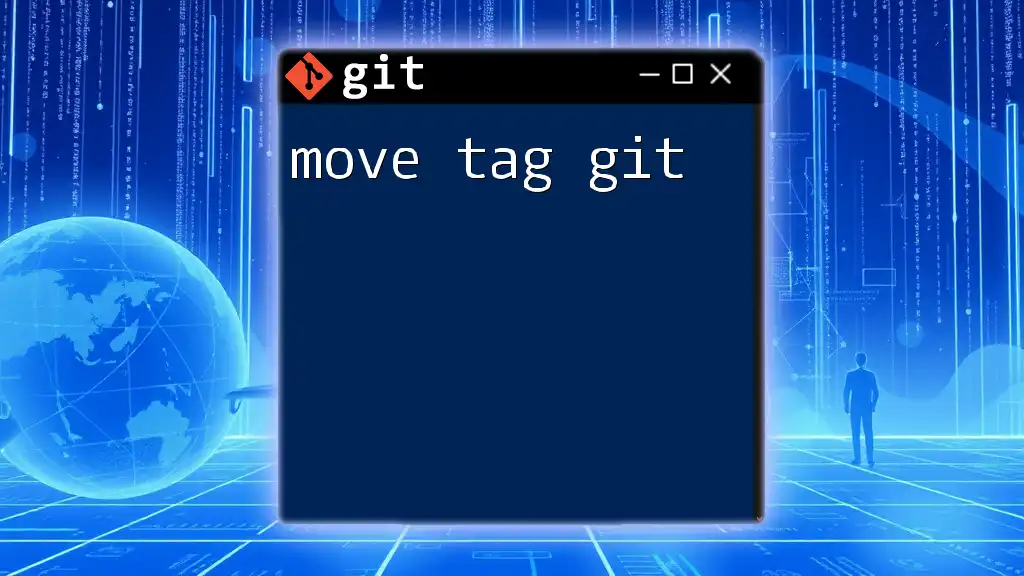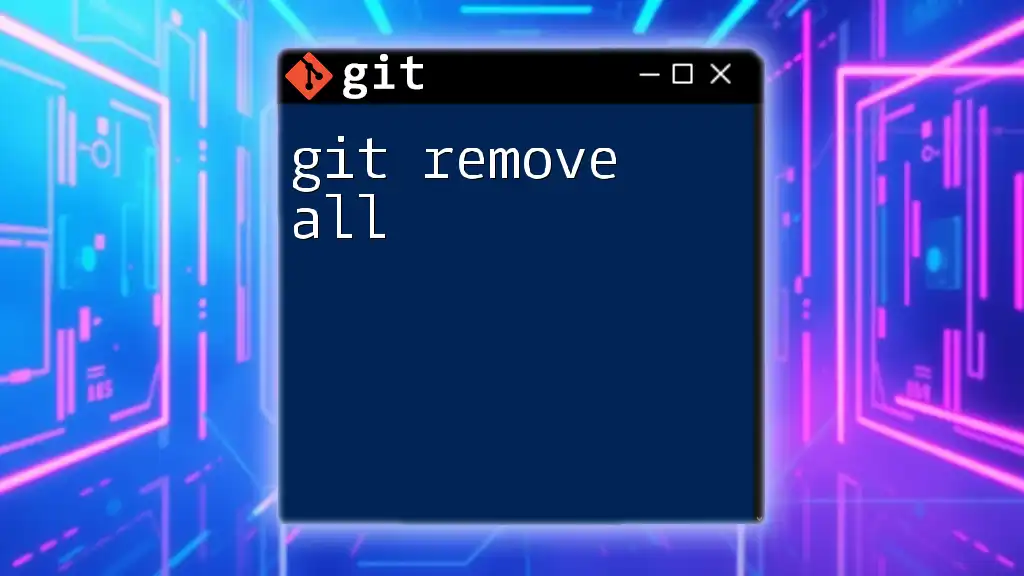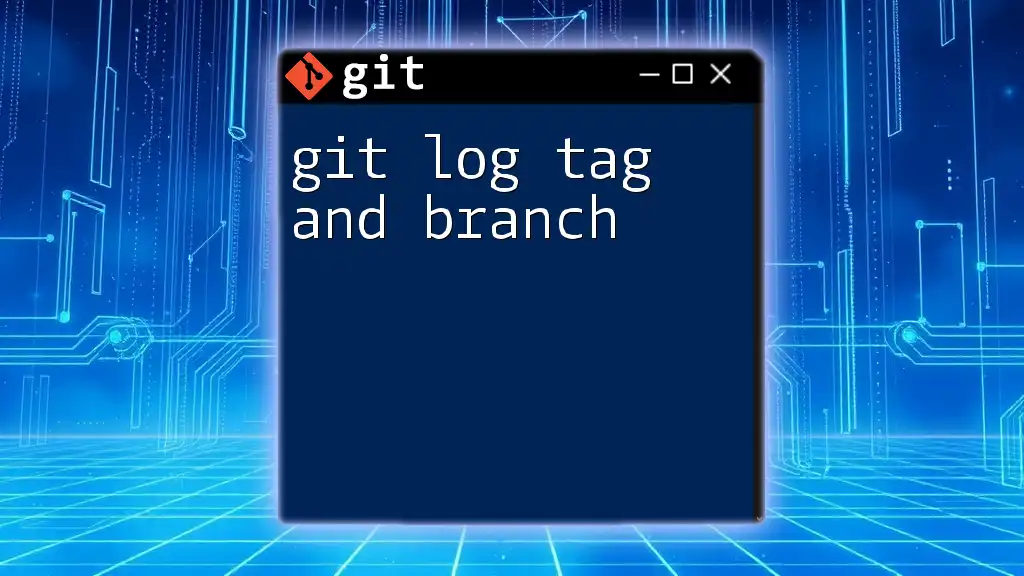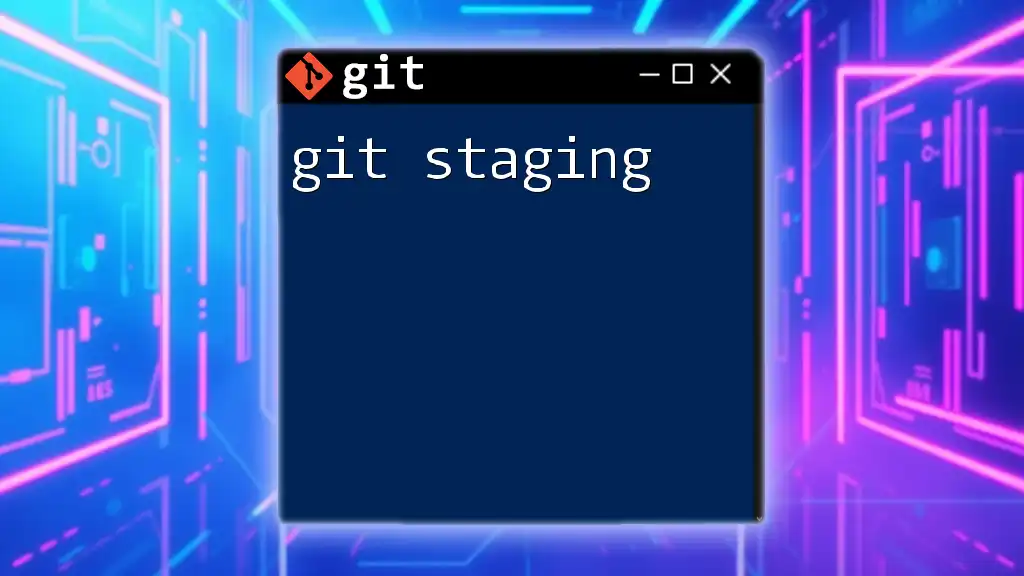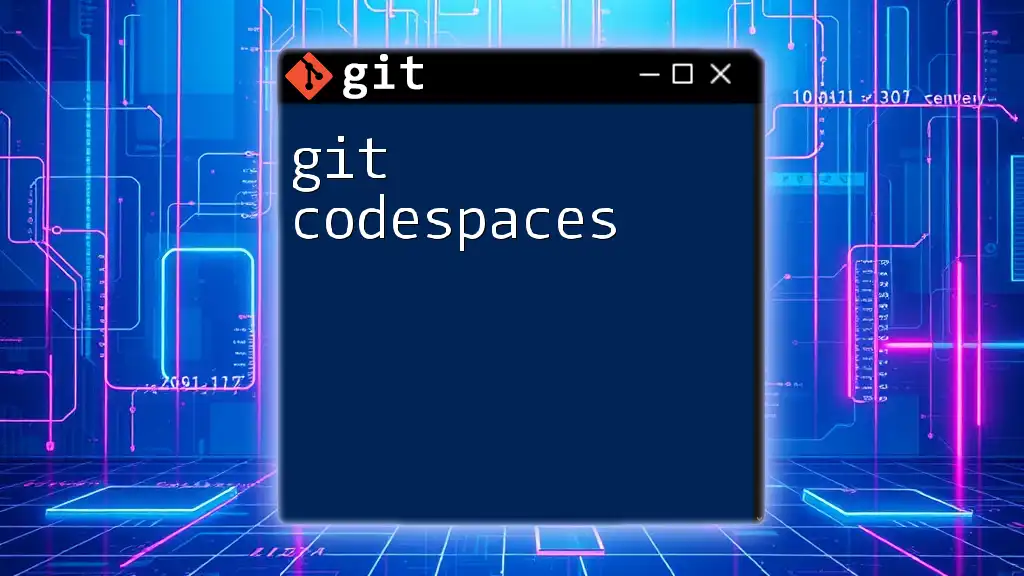You can move a Git tag to point to a different commit by deleting the old tag and creating a new one at the desired commit using the following commands:
git tag -d <tagname> # Delete the old tag
git tag <tagname> <commit> # Create a new tag at the specified commit
What are Git Tags?
Git tags are a powerful feature that allows developers to mark specific points in their project’s history as important. They are often used to denote release versions or other significant milestones in the development process. Tags can be classified into two types: lightweight tags and annotated tags.
- Lightweight tags are essentially bookmarks to a specific commit, while annotated tags are stored as full objects in the Git database and contain information such as the tagger’s name, email, date, and the associated message. This added information can be vital when tracking releases over time.
The use of tags is crucial for maintaining a coherent project history. They help in identifying stable release points, allowing for easier rollbacks and transitions.
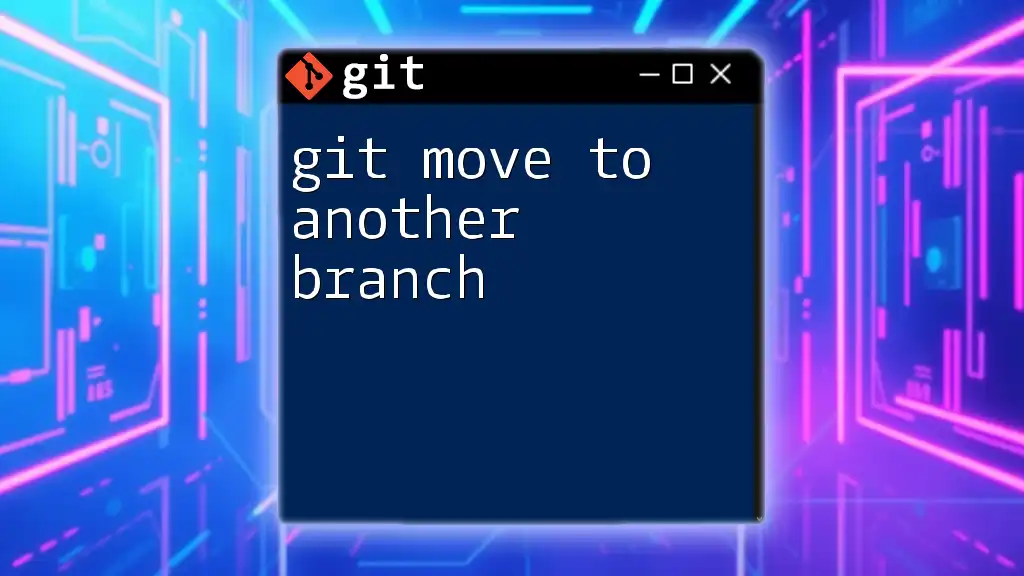
Why You Might Need to Move a Tag
There are several common scenarios in which you might find yourself needing to move a git tag. For instance, if a tag was mistakenly applied to the wrong commit or if you need to associate a tag with a new commit due to significant updates, moving a tag ensures that your project reflects its accurate state.
Maintaining a clean project history is essential for effective collaboration and project management, making it important to keep your tags aligned with the correct commits.
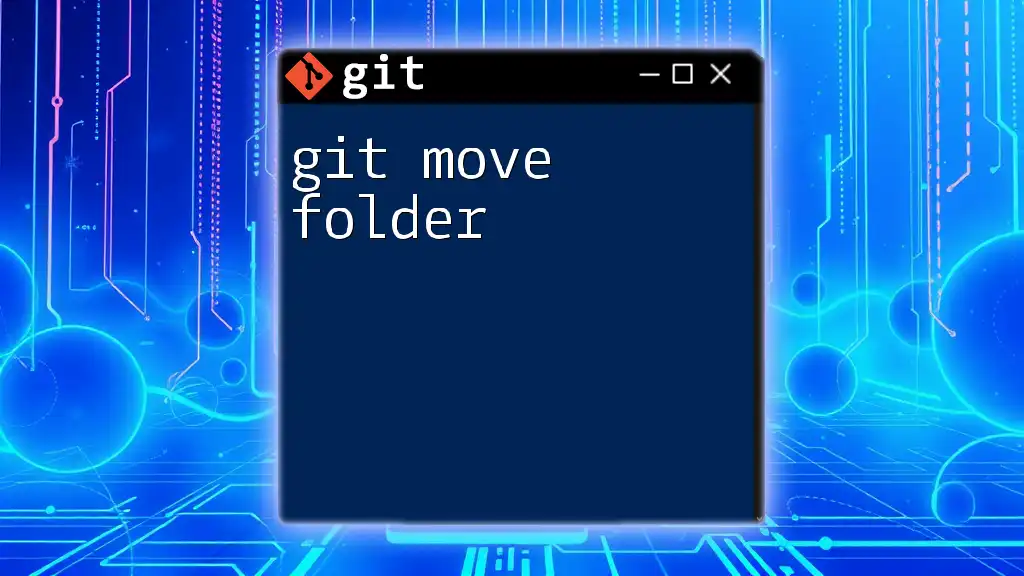
How to Move a Tag in Git
Prerequisites for Moving a Tag
Before moving a tag, ensure you have the latest version of Git installed and understand your current repository status. Being familiar with the local and remote branches can help prevent confusion during the process.
Steps to Move a Tag
Moving a tag involves a few straightforward steps. The recommended practice is to delete the existing tag first and then recreate it on the desired commit.
To move a tag, you’ll need to execute the following commands in your terminal:
-
Delete the old tag locally:
git tag -d <tag_name> -
Create a new tag at the desired commit:
git tag <tag_name> <new_commit>
Example: Moving a Tag from One Commit to Another
Let’s say you have a tag named `v1.0` that you wish to move to a different commit (e.g., a commit with the SHA `abc123`). The commands would look like this:
git tag -d v1.0
git tag v1.0 abc123
Understanding the Commands
-
The command `git tag -d <tag_name>` deletes the specified tag from your local repository. If you accidentally use this command, remember that the tag is permanently deleted from your local environment.
-
The command `git tag <tag_name> <new_commit>` allows you to create a new tag on a specific commit. This action effectively "moves" your tag to a new point in the history of your project.
Pushing the Moved Tag to Remote
Once you have successfully moved the tag locally, it’s essential to update the remote repository to reflect this change, especially if the tag was previously pushed.
Why You Need to Push the Tag
When working in a team, it's crucial to ensure that your teammates are accessing the same version of the tags. If a moved tag is not pushed to the remote, collaborators may still reference the old, incorrect tag.
Commands to Push and Delete Tags
Here are the commands you'll need:
-
First, delete the old tag from the remote repository:
git push origin :refs/tags/<tag_name> -
Next, push the newly moved tag to the remote:
git push origin <tag_name>
Understanding the Remote Tag Commands
-
The command `git push origin :refs/tags/<tag_name>` deletes the specified tag from the remote repository. This is crucial if you want to prevent confusion and ensure that only the correct tag exists.
-
The command `git push origin <tag_name>` pushes the new tag to the remote location, making it available to everyone else collaborating on the repository.

Common Pitfalls When Moving Tags
While moving tags is a straightforward process, there are several pitfalls you should be aware of to avoid complications:
Forgetting to Update the Remote Repository
One common mistake is forgetting to push the changes to the remote repository. If you’ve moved the tag locally but do not push it, collaborators may continue to work with the outdated tag, leading to confusion and inconsistencies.
Deleting the Wrong Tag
Accidentally deleting the wrong tag can happen, especially in larger projects. If this occurs, it may require additional steps to recreate the tag accurately. Regularly reviewing your tags and keeping a backup of important tags can mitigate this issue.
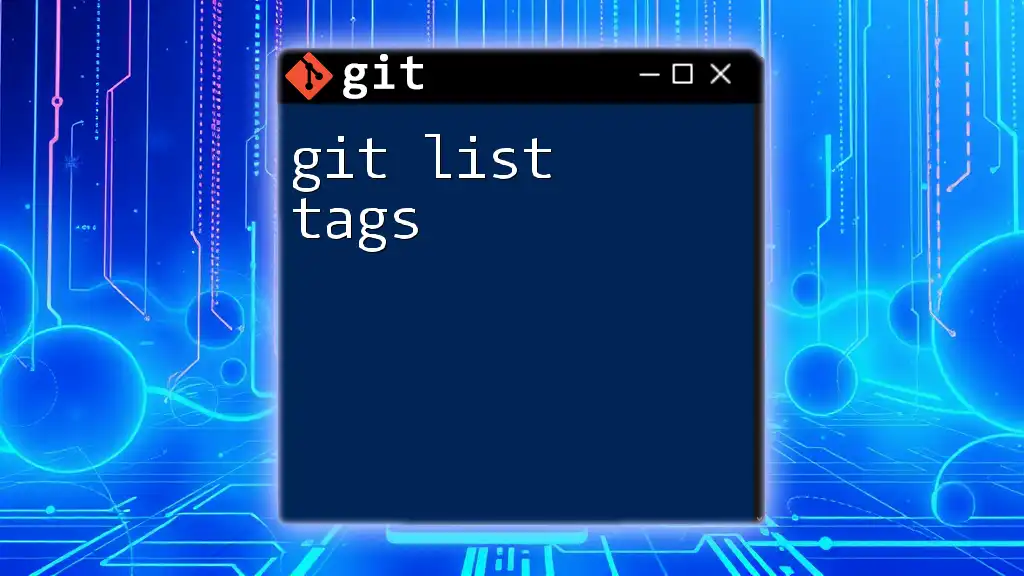
Best Practices for Tag Management
Naming Conventions for Tags
Establishing a consistent naming convention for your tags can greatly improve clarity when working in collaborative environments. Using formats such as semantic versioning (e.g., `v1.0.0`) can help ensure that everyone understands the significance of each tag at a glance.
Keeping a Clean Repository
Regularly cleaning up old and unused tags can enhance the maintainability of your project. Use commands like `git tag -l` to list all tags, and delete outdated or irrelevant tags to keep your repository organized.
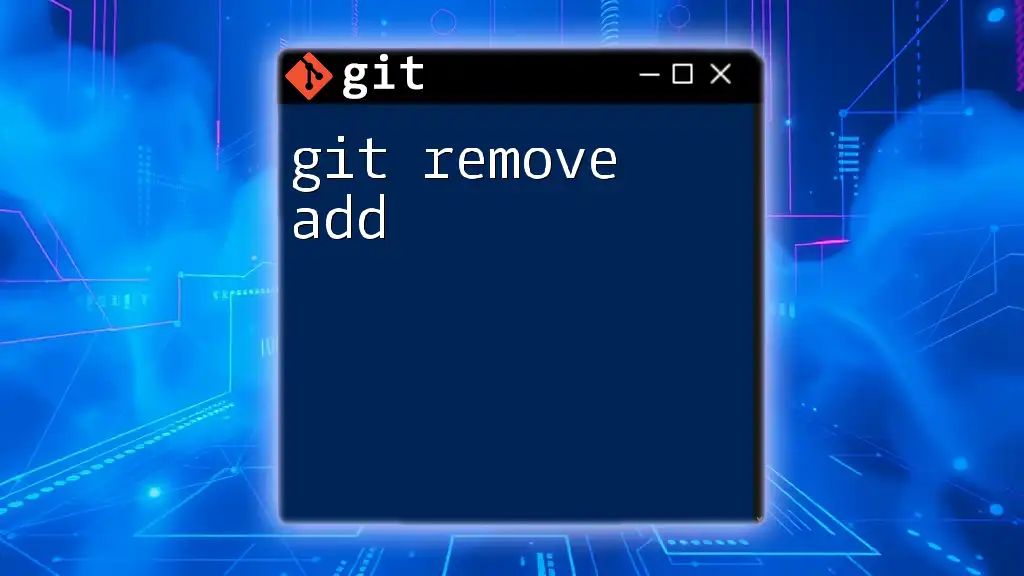
Conclusion
In summary, moving a git tag is a simple yet essential process that allows you to maintain an accurate representation of your project’s milestones. By understanding the key commands and practices discussed, you will be better prepared to manage tags effectively. Keeping your tags updated is vital for a clear project history and successful collaboration.
Further Resources
For more information on Git and tags, consider exploring the official Git documentation or additional learning resources on version control best practices. Your ability to navigate these tools will only enhance your development skills and project management strategies.







